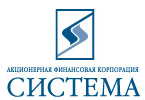|
|
|
 |
Virtual Tours round the Russian Museum The Mikhailovsky Palace |
     |
The Russian Museum
»
The Mikhailovsky Palace
»
External view
External viewThe history of the Palace begins with the birth of Grand Duke Mikhail. In 1798 Emperor Paul I ordered to save several hundred thousand roubles to built a future palace for his younger son. When Grand Duke Mikhail Pavlovich reached the age of 21 and the sum was 9 millions the construction of the palace was started. The palace was designed and built by Carlo Rossi (1775–1849) – a brilliant architect who created the largest Empire architectural ensembles which completed the building-up of the central part of St Petersburg in the 1810s–1820s. The city complex with the Mikhailovsky Palace in the centre is a real pearl among the creations of the great architect. The architect managed to achieve harmony between the palace building and the landscape, and the surrounding architecture. The sculptural, figurative, plastic, carved and other kinds of décor were created by the prominent sculptors Vasily Demut-Malinovsky and Stepan Pimenov, painters Pietro and Giovanni Batista Scotti, Antonio Vigi, Barnaba Medici, Fyodor Brullo and many others. Carlo Rossi made detailed plans of everything: from a cast iron grating with his favourite military attributes on the gate to the lay out of the park, from the solution of the city building problems to the design of patterns on glued-laminated parquet in the palace premises. The Mikhailovsky Palace was also famed for the salons and musical soirées, held by Grand Duchess Elena Pavlovna. Born Princess Helene Charlotte von Württemberg, she married Grand Duke Mikhail Pavlovich in 1824. A highly educated woman, she was the life and soul of the parties at the Mikhailovsky Palace. Her musical classes paved the way for the foundation of the St Petersburg Conservatoire. When Grand Duchess Elena Pavlovna died in 1873, the Mikhailovsky Palace was inherited by her daughter. Later Tsar Nicholas II decided to acquire the palace for the state and use it to house the Emperor Alexander III Russian Museum. Between 1895 and 1898, Vasily Svinin transformed the Mikhailovsky Palace into a museum. |
The Project “The Russian Museum: the Virtual Branch” |